 Roman Military Equipment
Roman Military Equipment
Protective Equipment
(Roman helmets
and Roman
Shields are shown in a seperate section)
Early lorica segmentata to the left, and lorica
hamata
to the right, both little statues are in the British Museum in London
Beyond a simple linnen and/or leather armour four basic types of metal body armour existed in parallel:
lorica segmentata
from Traian's column
from the Aalen Museum
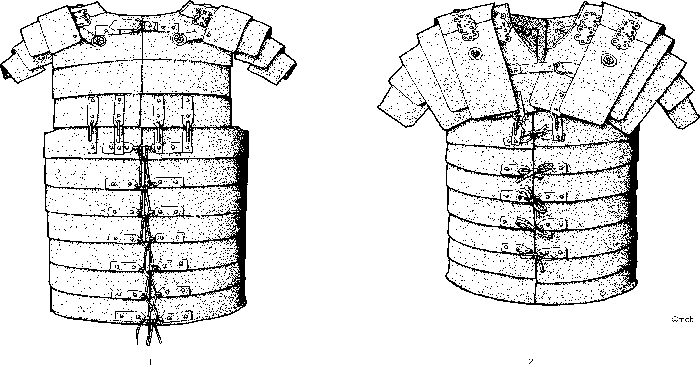
Drawings from Roman Military Equipment by
Bishop &
Coulston, Edition 2, 2006 © M.C. Bishop
Lorica segmentata pieces currently on
display at Museum Carnuntinum
( Austria, Bad Deutsch-Altenburg)
Published: Exhibition catalogue "Legionsadler und Druidenstab, F.
Humer,
2006," ISBN 3854602294"
Iron bands
bronze fittings, strap buckles, etc.
Shoulder armour; Scottish National Museum, Edinburgh
Segmentata Fittings from Corbridge (left), Kalkriese (right), and Newstead (below
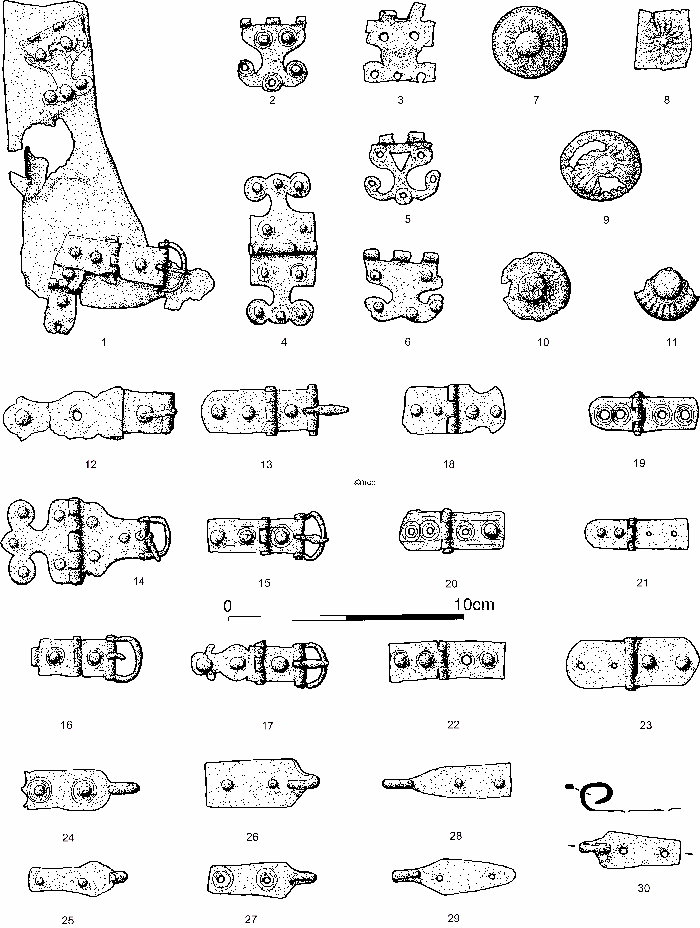
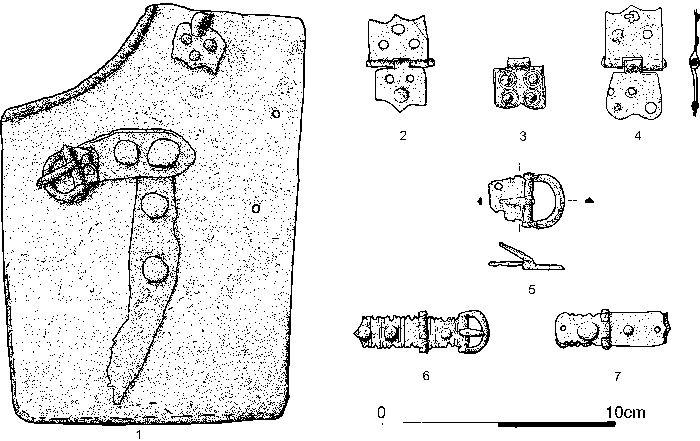
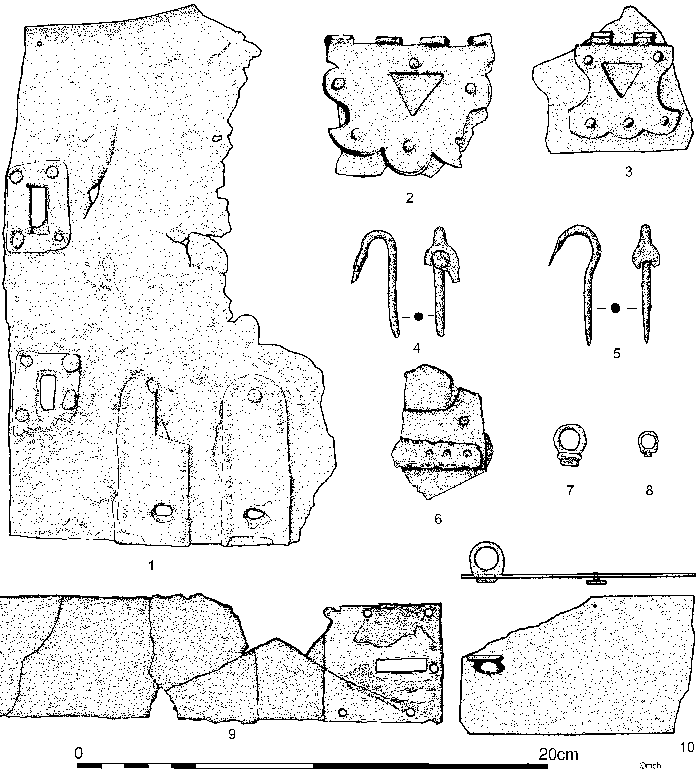
Drawings from Roman Military Equipment by
Bishop &
Coulston, Edition 2, 2006 © M.C. Bishop
various shapes and forms have been found, below two examples lorica
squamata
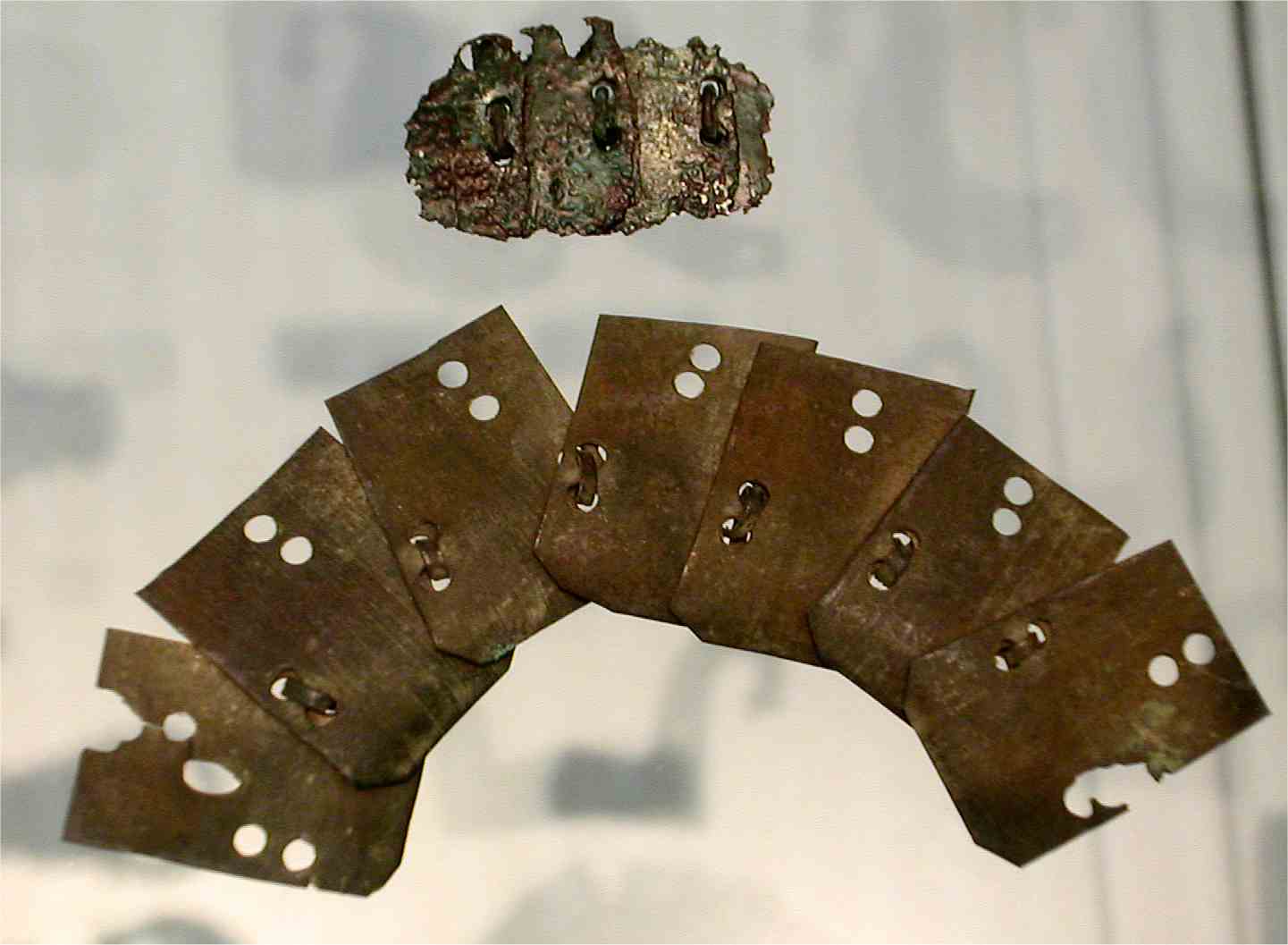
left from Nijmegen, right from Carnuntum
Below currently on display at Museum Carnuntinum ( Austria,
Bad Deutsch-Altenburg)
Published: Exhibition catalogue "Legionsadler und Druidenstab, F.
Humer,
2006," ISBN 3854602294"
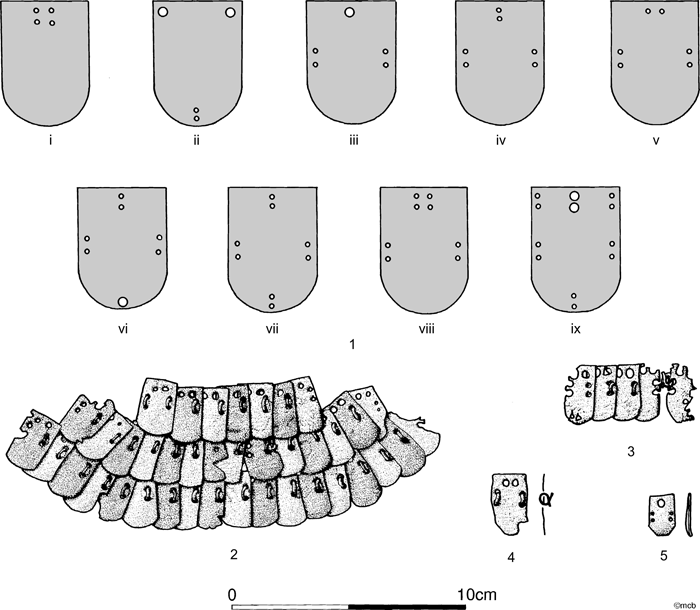
Drawings from Roman Military Equipment by
Bishop &
Coulston, Edition 2, 2006 © M.C. Bishop
Lorica Hamata
Roman armour made out of mail (iron rings) has survived only in
fragments.
Part of the equipment were however bronze devices to enable easy use
such
as the below examples:
Lorica Hamata pieces currently on display
at Museum Carnuntinum
( Austria, Bad Deutsch-Altenburg)
Published: Exhibition catalogue "Legionsadler und Druidenstab, F.
Humer,
2006," ISBN 3854602294"
lump of rusted mail armor
Hooks to close the mail shirts
Lock to close mail armour, from various
museums (see reconstruction
page for complete examples)
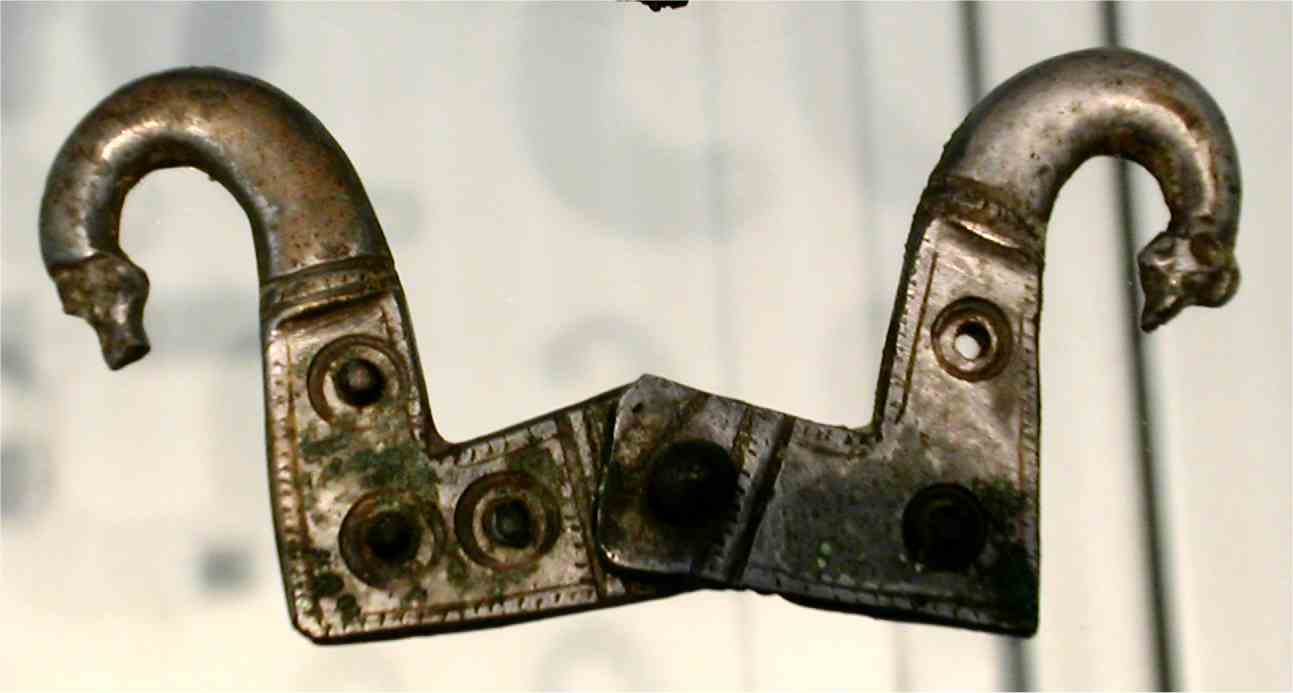 RGZM Mainz
RGZM Mainz
Nijmegen
Museum
Vindonissa
Museum
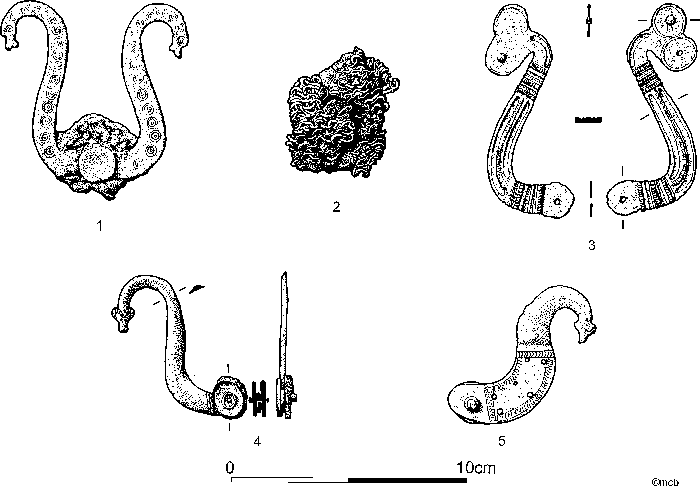
Drawings from Roman Military Equipment by
Bishop &
Coulston, Edition 2, 2006 © M.C. Bishop
Plate of a cavalryman`s armour as would
have been worn to close
a lorica hamata around the neck, Carnuntum, and from a private
collection
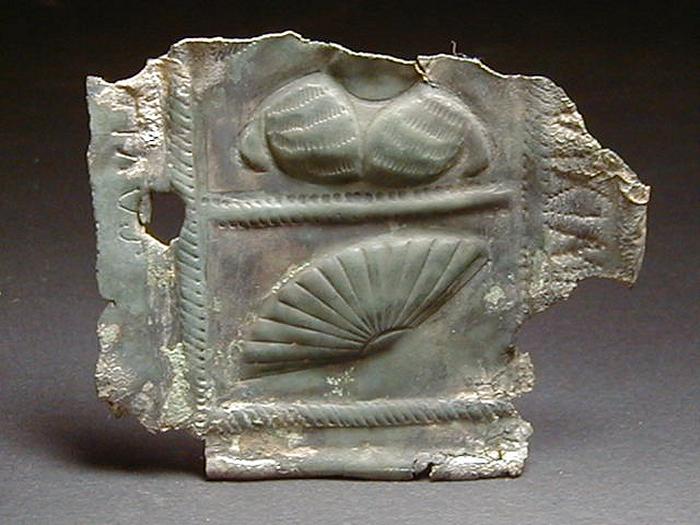
To the right part of a Cavalry Breast Armour with a soldier's name
"MAXIMVS" punched in (see right border), also another soldiers name
"SAVIV..."
can be seen on the left. Likely this armour was used over a long period
of time by several "generations" of soldiers.
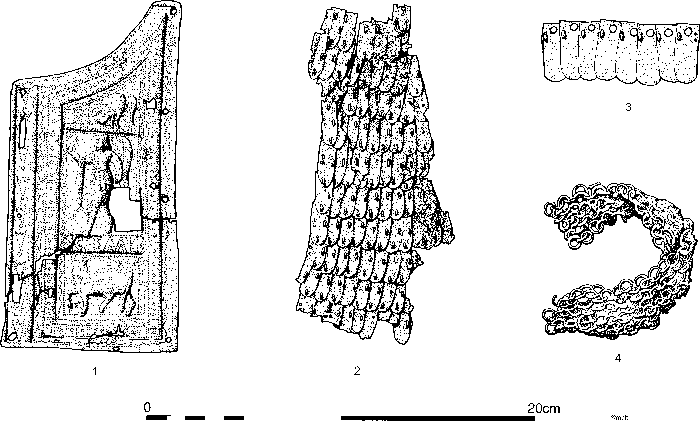 Antonine period
body armour
Antonine period
body armour
Drawings from Roman Military Equipment by
Bishop &
Coulston, Edition 2, 2006 © M.C. Bishop
Muscle Armour / Cuirass
Muscle armour was worn exclusively by high ranking officers and
generals,
including the emperor. A good example is the Augustus statue of
Primaporta
to the left (two images), and to the midle-right a statue of Marcus
Aurelius
of the Musei Capitolini. Note the knot around Marcus's waist (hercules
knot) indicating the commanding officer. Far right another example with
two griffins and medusa



To protect the legs Greaves were used by centurios, higher ranking military, possibly for parade purposes. Some are highly decorated
Regensburg Museum (to the right a copy of that greave in the
Munich
Archeological Museum)
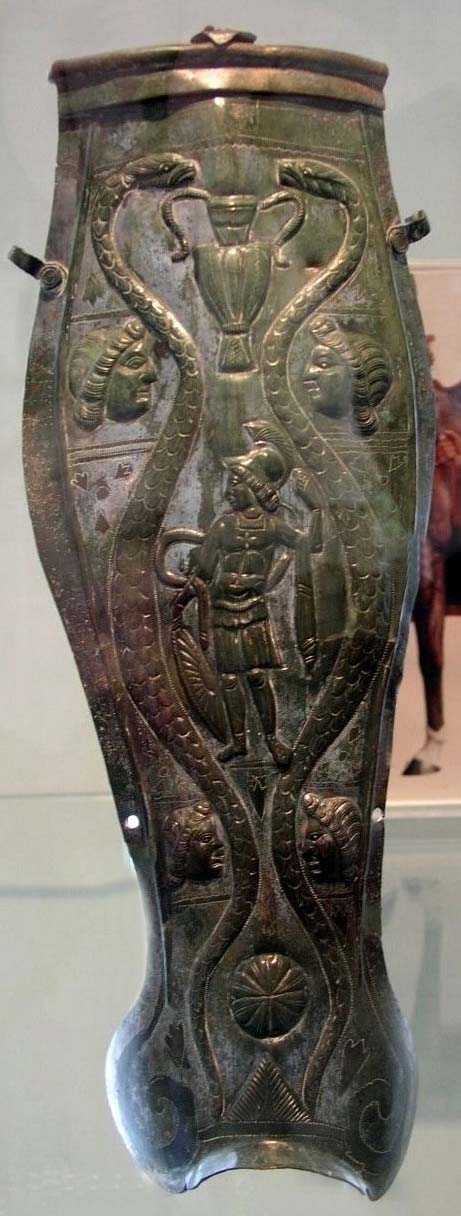
RGZM Mainz
 Guttmann
Collection
Guttmann
Collection
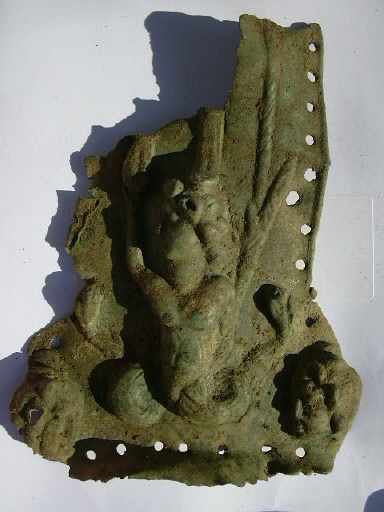
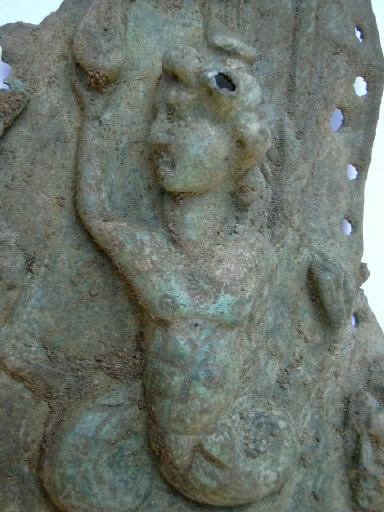 Fragment
of lower quarter of a greave with highly three dimensional decoration
Fragment
of lower quarter of a greave with highly three dimensional decoration
A simpler greave (protective cap for knee missing)
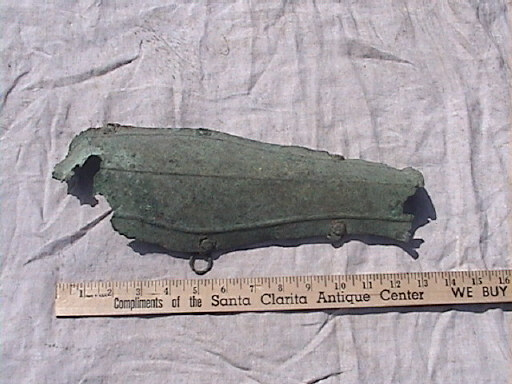
Vindonissa Museum: padding of a greave, to buffer hard hits.
Seemingly
made of leather and other organic materials
Related Sections of the Roman Numismatic Gallery:
The Location
of Roman Legions
from Caesar to ca. 300 AD is summarized in a table.
Military Equipment
Military Diploma
Roman Legionary Bricks
Countermarks of roman legions on coins are shown in the Legionary
Countermark section.
Coins making reference to roman legions are to be found in the Legionary
Coin section.
Wars and Victories on Roman
coins.
Roman Military Main Page